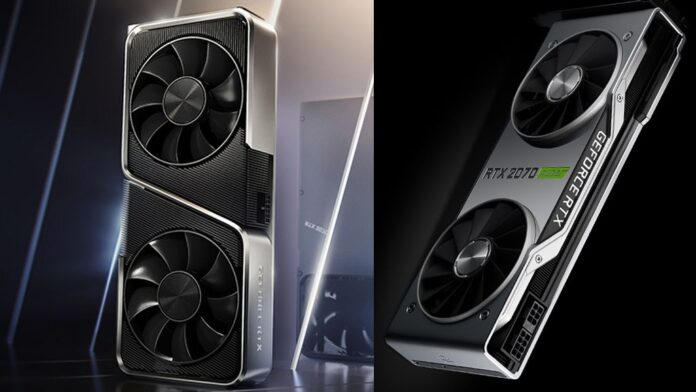With the release of the new RTX 3070, there’s been a lot of talk about how it compares to 2070 vs 3070. And for good reason—these are two of the most popular graphics cards on the market. So, what are the differences between the 2070 vs 3070? Let’s take a closer look. The RTX 2070 was released in October 2018, while the RTX 3070 was released in October 2020. The RTX 2070 has a base clock speed of 1,410 MHz and a boost clock speed of 1,610 MHz. It has 8 GB of GDDR6 memory and a memory clock speed of 14 Gbps. The RTX 3070 has a base clock speed of 1,500 MHz and a boost clock speed of 1,725 MHz. It has 8 GB of GDDR6 memory and a memory clock speed of 14 Gbps. As you can see, there are some significant differences between the two cards. The most notable difference is the increase in clock speeds for both the base and boost clocks on the RTX 3070. This results in better performance overall for the RTX 3070. Another significant difference is the increase in memory size from 8 GB to 16 GB on the RTX
What Is the Difference Between 2070 and 3070?
In the battle of high graphics card between 2070 vs 3070, both high-end graphics cards based on the Turing architecture. The main difference between the two is that the GTX 2070 is a bit older and uses the older Pascal architecture. The GTX 3070 is newer and uses the newer Turing architecture. Both cards are similar in terms of performance, but the GTX 3070 is slightly faster.
The other main difference between the two cards is that the GTX 2070 has 8GB of GDDR6 memory while the GTX 3070 has 8GB of GDDR6X memory. The GDDR6X memory is faster than GDDR6 and offers better performance.
Both cards are great for gaming and can handle any game you throw at them. If you’re looking for the best possible performance, then the GTX 3070 is the better choice. However, if you’re on a budget, then the GTX 2070 is a great option as well.
Performance Differences – Components, Graphics, and Storage
It’s no secret that PCs have been locked in a seemingly never-ending battle. In recent years, the fight has shifted from who has the most powerful hardware to who has the best value for the money.
While it’s true that you can find both high-end and low-end options for each type of computer, there are still some important performance differences between the two that are worth considering. In this section, we’ll take a look at three key areas: components, graphics, and storage.
Starting with components, it’s important to note that most are not exclusive to one type of computer or the other. That said, there are still some notable exceptions. For example, is typically required for gaming PCs, while is commonly found in business machines.
When it comes to graphics, again, both PCs can offer excellent visuals. However, gaming computers usually have an edge thanks to features like higher refresh rates and support for VR headsets. Storage is another area where there can be big differences, with gaming rigs often packing in much more space than their counterparts.
Key Considerations When Picking Between 2070 vs 3070
There are a few key considerations to keep in mind when picking between the 2070 vs 3070. Firstly, think about what you need the card for. If you’re a casual gamer, then 2070 will likely suffice. However, if you’re a more serious gamer or need the card for 4K gaming or other demanding tasks, then the 3070 is the better option. Secondly, consider your budget. 2070 is generally cheaper than the 3070, so if cost is a concern, it may be the better option. Finally, keep in mind that the 3070 offers better performance than 2070, so if you can afford it and need the extra power, it’s worth considering.
Connectivity
In today’s world, connectivity is key. We rely on our devices to connect us to the people and information we need. So, when choosing a smartphone, it’s important to consider which one will best meet your needs.
When it comes to connectivity, there are a few key things to keep in mind. First, what kind of data connection does the phone have? The two most common are GSM and CDMA. GSM is more widely used, but CDMA can offer better coverage in some areas.
Second, what kind of networks does the phone support? Most phones will work with both 3G and 4G LTE networks, but not all phones are created equal. Some phones may only work with certain types of networks or may not be able to connect to certain carriers.
Finally, you’ll want to consider international roaming options. If you travel frequently or need to be able to use your phone overseas, make sure your choice supports the right type of SIM card and has the necessary bands for international use.
Operating System
A typical central processing unit (CPU) has an instruction set that includes basic instructions for moving data, arithmetic operations, and controlling the flow of execution.
-In addition to the instruction set, a CPU also has a limited amount of storage called registers.
-Registers are used to store data and instructions that are being worked on at any given time.
-The operating system manages the use of these registers so that multiple programs can share the CPU without interfering with each other.
-In addition to managing the registers, the operating system is responsible for managing memory, providing a file system, and managing I/O devices such as printers and disks.
Pricing and Availability
Pricing and Availability
When it comes to pricing, is the clear winner. You can get started with a free account, and upgrade to one of their paid plans if you need more features. Paid plans start at $5/month, which is very affordable. also has a free plan, but it’s much more limited than ’s. If you need any of the features that are only available on paid plans, you’ll have to shell out $12/month. That’s a big price difference, especially if you’re just starting out.
When it comes to availability, both platforms are pretty similar. They’re both available in most countries around the world. However, does have a few more country-specific features (like support for local payment methods) that might be important to you if you’re doing business in a specific country.
Conclusion
Overall, the 3070 is the better choice if you’re looking for an upgrade from 2070. It’s faster, more energy efficient, and comes with more features than its predecessor. If you’re simply looking for a good entry-level GPU, however, 2070 will still serve you well. Whichever card you choose, you’ll be getting a great GPU that will offer superb gaming performance.
































